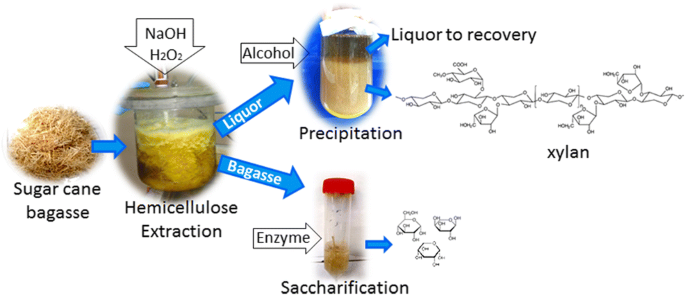Maximizar Rendimientos Y Minimizar Costos: Estrategias Avanzadas Para La Optimización Química Del Procesamiento De Azúcar De Caña
In the realm of walking cane sugar processing, the quest of taking full advantage of returns while concurrently lessening prices stands as a formidable difficulty that calls for a strategic blend of sophisticated chemical optimization strategies. The intricacies of this venture explore the core of efficiency, where every aspect of the procedure plays a crucial role in accomplishing ideal end results. By exploring the complexities of chemical analysis, enzyme use, pH control, purification, and purification methods, a landscape rich with opportunities for enhancement and advancement arises. Among this detailed internet of strategies lies the promise of unlocking untapped potential and transforming the extremely essence of sugar production. Cane Sugar Processing Chemicals.
Chemical Evaluation for Effectiveness
Chemical analysis plays a critical role in enhancing the efficiency of sugar walking cane handling by supplying vital insights into the make-up and residential or commercial properties of the raw materials. By conducting detailed chemical evaluations on sugar walking cane samples, cpus can establish the exact concentrations of sucrose, sugar, fructose, and various other parts present in the raw product. This info is vital for maximizing the numerous phases of the sugar walking stick handling chain, from crushing to condensation.
Furthermore, chemical analysis makes it possible for processors to identify contaminations such as natural acids, proteins, and minerals that can affect the quality and return of the final sugar item. By measuring these impurities, cpus can apply targeted methods to remove or minimize their impacts, ultimately improving the total effectiveness of the handling plant.
In addition, chemical analysis promotes the surveillance of procedure parameters such as pH, temperature, and thickness, enabling cpus to make real-time adjustments to make certain optimal conditions for sugar removal and formation. In general, a comprehensive understanding of the chemical structure of sugar cane is vital for optimizing returns, minimizing expenses, and preserving high item top quality in the sugar production industry.

Enzyme Utilization for Boosted Yields
With a strategic technique to enzyme utilization, sugar walking stick cpus can considerably boost their returns while preserving functional performance in the production process. Enzymes play a critical role in sugar walking stick handling by breaking down complicated carbs right into simpler sugars, thus boosting the total sugar extraction efficiency. By integrating details enzymes customized to target the different elements of sugar walking stick, such as cellulose and hemicellulose, cpus can boost the release of sugars during extraction.
Enzyme usage provides the advantage of taking full advantage of sugar returns from the raw material while reducing the energy and resources required for processing. Through mindful option and application of enzymes, sugar walking cane cpus can enhance their operations to achieve higher returns and productivity.
Ph Control for Optimum Handling
Enzyme utilization for enhanced returns in sugar walking cane handling lays the structure find out here now for dealing with the important facet of pH control for optimum processing efficiency. Preserving the proper pH degree throughout numerous phases of sugar cane processing is vital for maximizing yields and reducing expenses. By very carefully checking and adjusting the pH levels at different processing actions, sugar cane processors can enhance sugar recovery rates, reduce chemical usage, and maximize the overall production procedure.
Advanced Filtration Techniques
Executing sophisticated filtering strategies in sugar walking cane handling boosts the efficiency and pureness of the end product with fine-tuned separation techniques. By including sophisticated filtering modern technologies, such as membrane layer filtering and activated carbon filtration, sugar walking cane handling plants can accomplish higher degrees of sugar healing and improved quality assurance.

Activated carbon filtration is another innovative method that helps in the removal of colorants, off-flavors, and recurring contaminations from sugar walking stick products. By making use of turned on carbon's adsorption residential properties, this filtering method boosts the explanation quality and taste of the sugar, meeting the high criteria demanded by consumers and sector guidelines.
Energy-Efficient Distillation Approaches
Energy-efficient distillation approaches are vital for optimizing the sugar walking stick processing market's power usage while keeping top notch product requirements. Traditional distillation procedures can be energy-intensive, leading to greater production prices and environmental impacts (Cane Sugar Processing Chemicals). Executing energy-efficient purification approaches, such as vacuum distillation or molecular distillation, can considerably lower power demands while boosting overall procedure performance
Vacuum distillation includes decreasing the pressure within the distillation system, which reduces the boiling factor of the fluid mixture being processed. This decrease in boiling factor lowers the energy needed for vaporization, leading to power financial savings compared to traditional distillation techniques.
On the various other hand, molecular purification makes use of brief course purification strategies under high vacuum cleaner conditions to separate compounds based on their molecular weight. This technique is especially efficient for heat-sensitive materials, as it runs at reduced temperature levels, lowering power consumption and preserving product quality.
Conclusion
